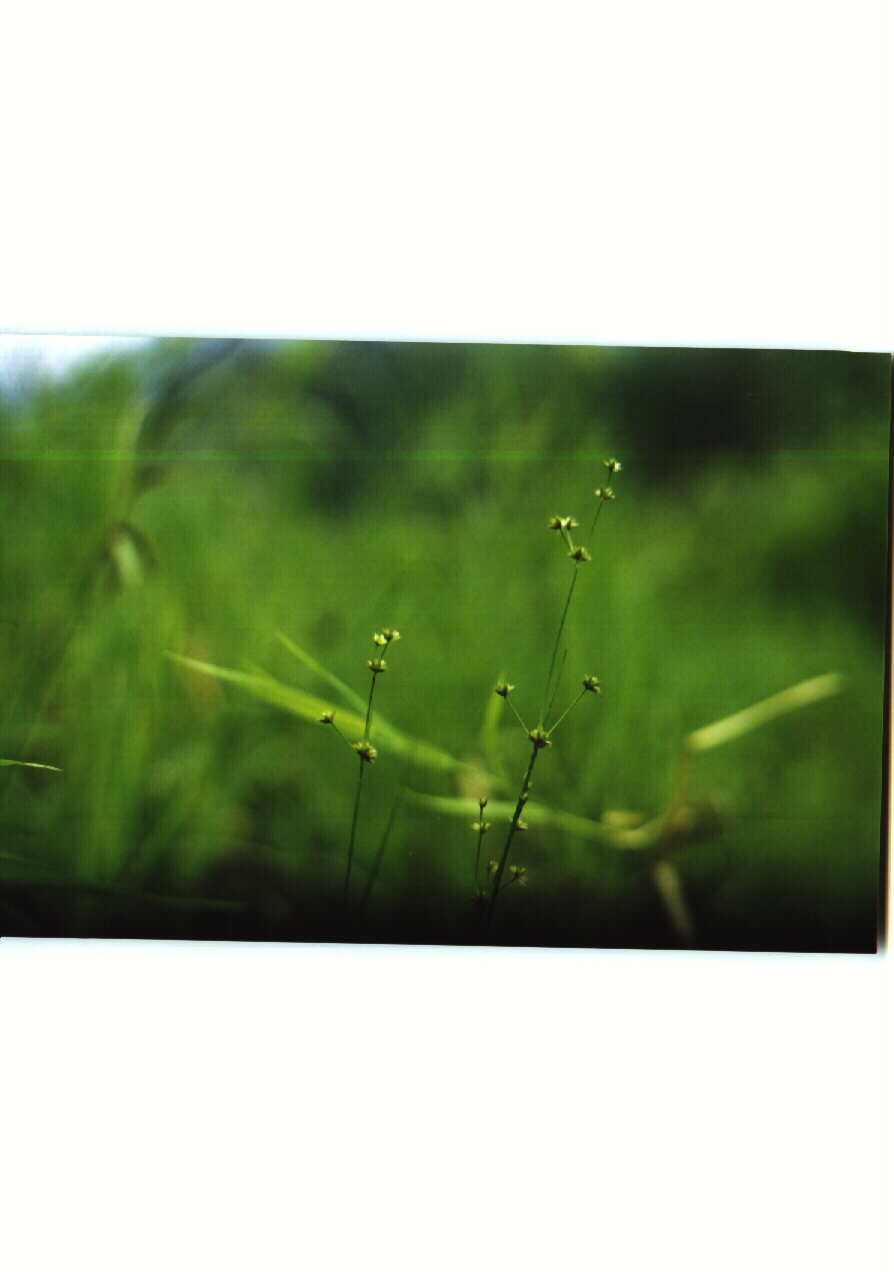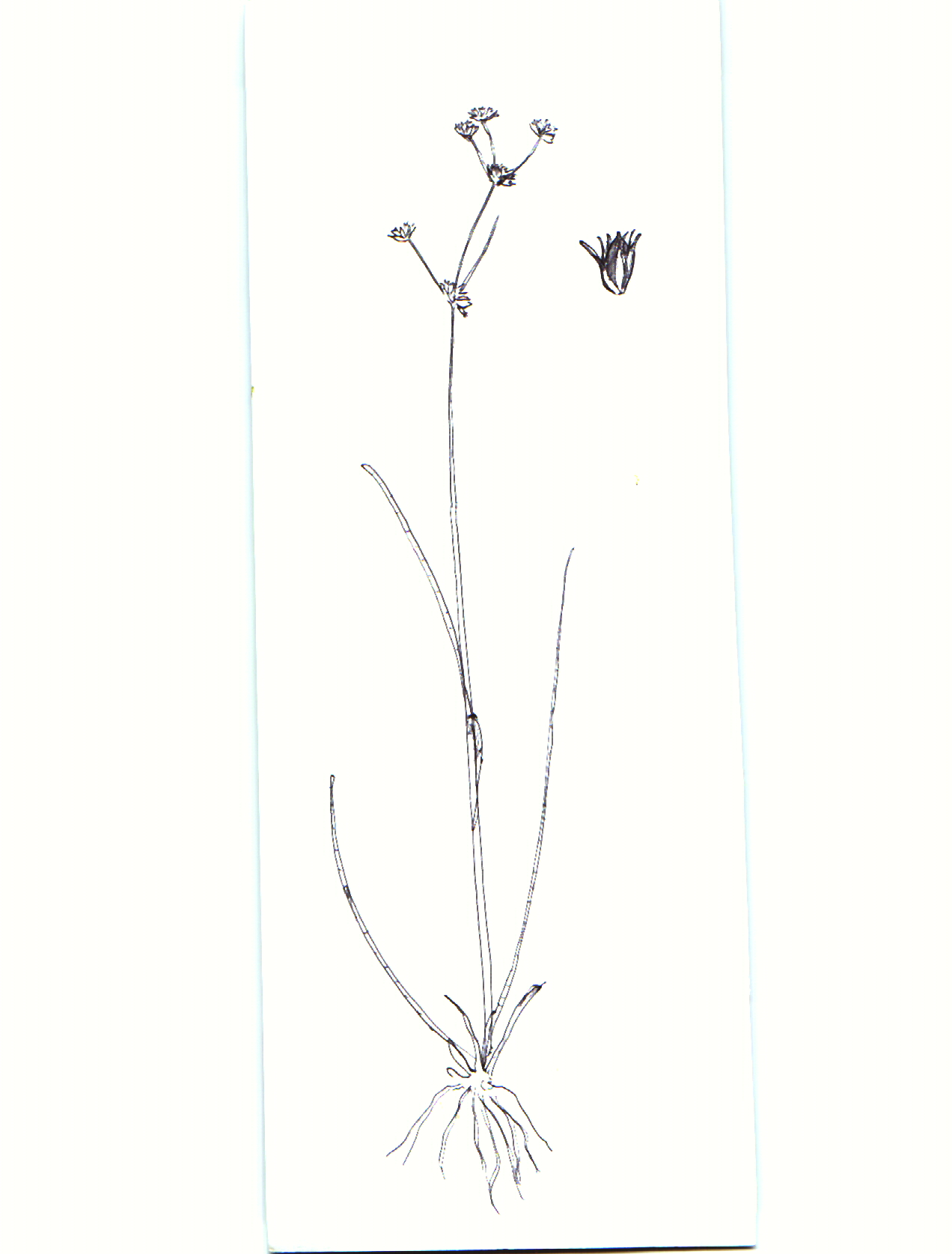

General Species Description
- J.acuminatus is a tufted perennial rush growing from 40 to 80 centimeters in height. Dense flower clusters are arranged on branches at the terminal end of the flower stalk. At the base of some of the clusters of branches, short leaves are produced which never attain more height than the tallest flower cluster. The flowers turn an orange-ish color toward the end of their season.
Leaves
- Light green leaves have both a flat and a round side, and have auricles. Leaves that emerge low on the plant rather than at flower clusters do not grow taller than the inflorescence.
Inflorescence/Flowers
- J. acuminatus blooms from late May to August. Flowers are borne on branches, in clusters, each shaped like a half-spherical fan. When young, they are greenish to straw-colored, becoming orange-ish at maturity. The tepals and capsule are equal in length, both about 3 - 3.5mm long, and pointed. There are 3 - 30 flower clusters per plant, all terminal to the flower stalk. Each cluster is made up of 5 - 20 flowers, with 3-6 stamens per flower.
Fruits
- Seeds are oblong, pointed on each end, and about .04 mm in length.
Habitat
- Emergent meadows, lakesides, and ditches that remain wet year-round are the preferred habitat for J. acuminatus. It grows in association with many different species of sedge, as well as rushes such as toad rush (J. bufonius) and soft rush (J. effusus). Other associated plants are veronica (Veronica Americana), water starwort ( Callitriche sp.), and Polygonum species.
Range
- J. acuminatus is found thought North America; in strips along the west coast from British Columbia to California, in SW Idaho and Arizona, from Minnesota to New Mexico and Texas, and from Nova Scotia to Florida.
Similar Species
- Jointed rush (J. articulatus) can be differentiated from tapertip rush by its thinly pointed capsule, which exceeds the tepals in height. Mud rush (J. gerardii) is found only in salt marshes and its tepals are curled. Sierra rush (J. nevadensis) is rhizomatous with long, lance-shaped tepals and capsules. It also bears no more than 20 flower clusters. Pointed rush (J. oxymeris) has tepals shorter than the capsule, and flat leaves.
Ecological Value
- Many species of insect, birds, and mammal use rushes in general for forage and nesting material. Rushes provide many necessary nutrients to wetland ecosystems in the form of dead plant matter, as well as absorbing heavy metals and other harmful nutrient build-ups from the soil. The presence of rushes slows water movement and thus leads to the accumulation of sediment.
Human Value
- Rushes have been used as thread and continue to be used in basketry.
References
- Cooke, S.S, ed. 1997. A Field Guide to the Common Wetland Plants of Western Washington and Northwestern Oregon. Seattle Audubon Society and Washington Native Plant Society. Seattle Ausubon Society, Seattle, WA, 417pp. Hitchcock, Leo C. and Arthur Cronquist. 1973. Flora of the Pacific Northwest. University of Washington Press, Seattle, WA, and London, England, 730pp.
This page was created by: Jorah Reinstein, August 1999
Return to Northwest Oregon Wetland Plants Project